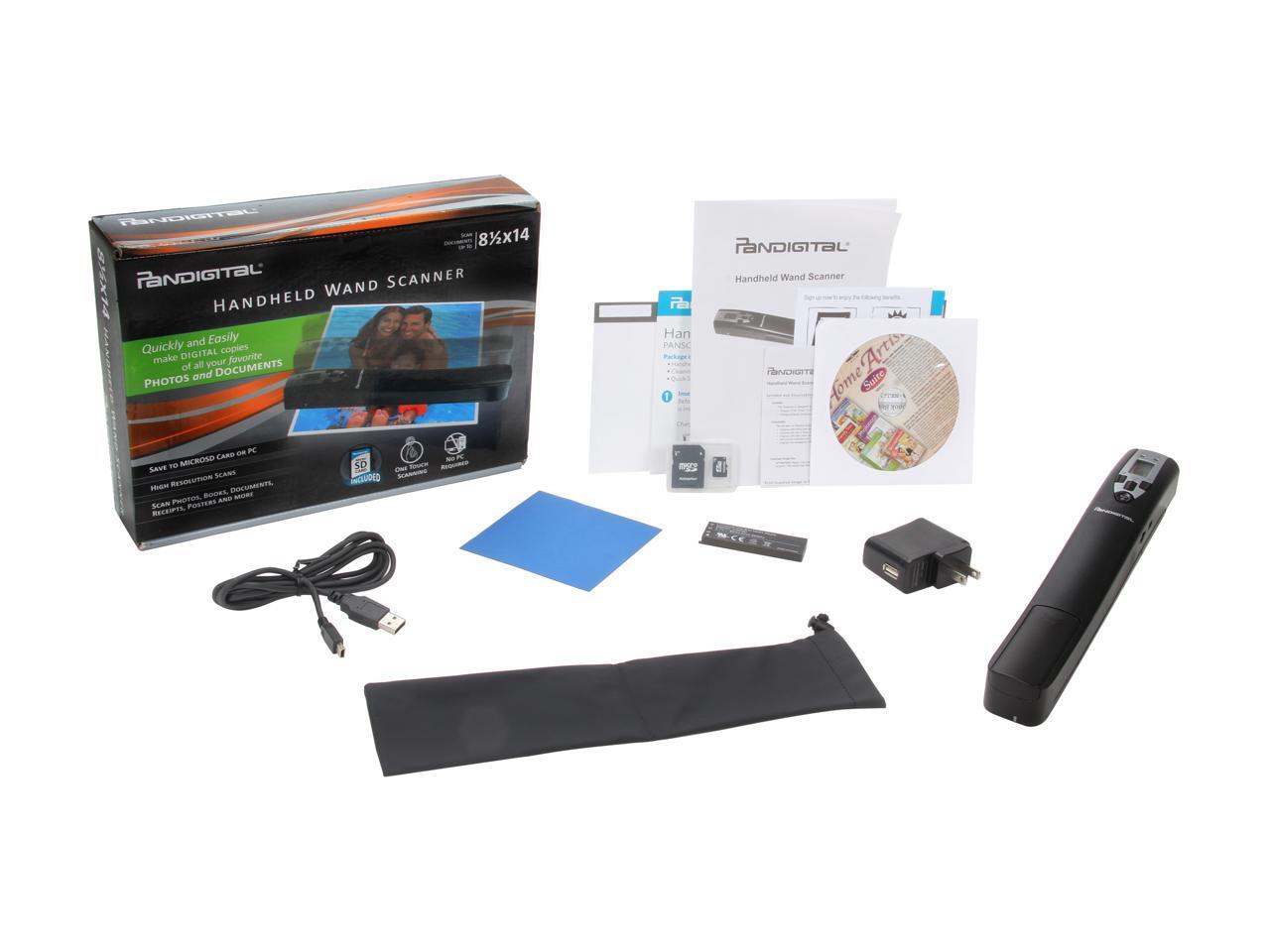
JPG versions of the original, and stored on the SD card housed in the unit. The sheet feeder can be used for documents as well as photos – though when using it with photos, it is important to be careful, as the rollers may damage the original photo. Those who are worried about damaging the original photo, you can use plastic protective sleeves. When you’re finished scanning photos, simply remove the SD card and place it in your digital picture frame, or in a card reader on your computer to edit and view the photos. There are several portable scanners in the Pandigital family, including film and negative scanners. This product does not scan film and negatives. The scanner works with a variety of cards, including: SD, XD, MS, MS Pro, and MMC cards. You can scan photos at either 300 DPI or 600 pixels per inch. The scanner works with recent versions of Windows and Mac OS X, but it will recognize the scanner’s card as a USB drive, to allow you to copy the files to your computer. The scanner offers one-touch scanning for speed and usability. Since there is no battery, you must carry the power cable with you at all times if you expect to be able to use the scanner. Once it is plugged in, it only takes a few seconds to load the photo or the document, and the rest is automatically handled for you. The scanning speed for this unit depends on a variety of factors.Ĭlick here for specifications on Amazon Scanning Speed Photo Quality Due to the lack of software that comes with the scanner, you won’t find features such as color correction or dust/scratch removal.

Ultimately, the longer you take to load the photo into the manually feeder, the longer the scan will take. Scanning at a higher resolution will take longer. Using a protective sleeve will also add to the scanning time.

User reviews report times ranging anywhere from 7.2 seconds to 34 seconds, depending on resolution and whether or not a protective sleeve was used.

While it is definitely not the fastest scanner on the market today, these times don’t necessarily make it a slow scanner.įor basic reprints for friends and family, the resulting image quality is okay – good enough to work. For anyone who serious about photography, whether amateur or professional, the quality won’t be good enough. Many users report a shift to red in photos, darkening that resulted in lost details, and overall grainy appearance compared to the original photos. The lack of software and editing capabilities means you’ll have to go to a computer with separate editing software to work on the digitized versions of the photos.


 0 kommentar(er)
0 kommentar(er)
